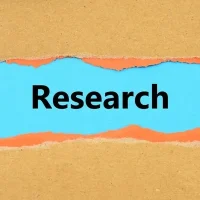Deadline: 15-Mar-23
The National Institutes of Health (NIH) is offering grants to support Substance Use Prevention Effectiveness Research Among Youth and Families in the Child Welfare System.
In addition, the child welfare system faces many capacity barriers that can limit its ability to prioritize and implement substance use prevention programming. These barriers include limited time, funding, or other resources needed to implement screening and interventions; staffing turnover, shortages, and lack of trained prevention staff; and competing service needs that might be more immediate than substance use prevention services. This FOA seeks applications that test preventive intervention strategies that consider these factors, proposing interventions and delivery strategies that employ solutions for overcoming common barriers to implementation, increasing the likelihood for sustainment beyond the research funding.
Purpose
- The purpose is to support effectiveness research to test interventions or services that prevent opioid misuse or opioid use disorder specifically among youth, caregivers (including foster parents), and families served by the child welfare system. The goal of this research is to grow the body of evidence-based prevention programs effective for use within or through referrals from the child welfare system, ultimately reducing immediate and multigenerational risk for substance misuse among families. In this initiative, involvement with the child welfare system is defined broadly to include populations with risk for entering, currently receiving services from, or having exited from the child welfare system.
Scope
- This FOA will fund clinical trials to examine the effectiveness of interventions to prevent substance misuse and disorder among youth, caregivers, and/or families involved in or at-risk of becoming involved in the child welfare system. Involvement in or at-risk for involvement in the child welfare system is broadly defined for this initiative. Populations of interest include (but are not limited to):
- caregivers or families investigated by child protective services;
- youth, caregivers (including foster parents), or families receiving any type of child welfare services, including self-sufficiency services;
- children who are in out-of-home placement and/or children who are at risk of being placed in out-of-home care;
- pregnant and parenting youth in foster care;
- pregnant and parenting people with substance use disorders who are known to the child welfare system; and
- youth who are in the process of aging out or who recently aged out of foster care.
- This FOA is focused on practical, real-world tests of interventions, aiming to support preventive interventions that have the potential to be broadly disseminated and scaled if found to be effective. NIDA intends to fund projects that strategically adapt or build upon promising practices and critical components of preventive interventions to develop and test prevention strategies that are well-positioned for delivery to the specified population of interest.
- This includes both NIH Stage III (efficacy-effectiveness) and stage IV (effectiveness) research which test interventions in real-world settings, with community-based providers or caregivers. Research examining effectiveness of preventive interventions in the absence of intervention efficacy data can be supported. For example, efficacy-effectiveness trials of research-informed or promising practices are within scope of this FOA, as are tests of prevention strategies derived from a combination of research-informed intervention components that haven’t been tested in combination. Projects that consider implementation related questions and outcomes are strongly encouraged, to increase the likelihood that effective interventions will be ready for implementation.
- This FOA seeks a range of effectiveness research studies, including but not limited to:
- Studies that adapt and tailor promising or evidence-based interventions, or selected components of those interventions, for delivery to a selected population involved in the child welfare system; this may include adaptations to ensure the intervention addresses substance-related risk factors and can be feasibly delivered to the target population.
- Tests of intergenerational interventions that combine treatment of parental substance use disorders with preventive strategies for youth to reduce youth substance use. Interventions might target a range of contextual, social, or individual risk factors prevalent in child-welfare involved populations, including childhood maltreatment, psychiatric comorbidity, etc.
- Research testing interventions to prevent substance misuse that are trauma-informed and address post-traumatic stress symptoms or disorder among youth, caregivers, or families involved with the child welfare system.
- Research to test the effectiveness and implementation of screening, brief interventions, and referral to prevention services among youth, caregivers, or families. Referral may be across service systems (e.g., collaboration with or referral to primary care, community mental health centers, etc.).
- Studies of approaches to interventions that incorporate technology (e.g., mobile health, telehealth intervention delivery) to determine how they might improve effectiveness of, access to, and value of preventive intervention services.
- A range of research designs testing effectiveness can be supported by this FOA, including randomized controlled trials or other types of controlled designs employing statistical approaches that mitigate bias and support causal inferences. Applicants are encouraged to propose hybrid research designs that simultaneously test effectiveness and implementation outcomes. For example, of interest are studies that assess the extent to which the intervention is being implemented with fidelity and the identification of factors that may facilitate and hinder the implementation of the intervention. Research designs that allow for tests of mediators, moderators, and mechanisms of action are also strongly encouraged.
- All proposed research should include substance use prevention outcomes. Measurement of the crossover effects of preventive interventions on other social and health-related outcomes is strongly encouraged. Preventive interventions might impact several interrelated family, caregiver-youth dyad, or individual social and behavioral factors, and applicants should describe expected linkages between intervention activities/services, outputs, and expected outcomes. For example, applicants might consider how their intervention impacts (directly or indirectly) contact or experiences with the child welfare system, involvement or experiences with the criminal legal system, coping, mental disorders, suicidal thoughts and behaviors, social supports, interpersonal relationship quality, housing status, educational or employment experiences, family functioning, or individual/family environmental conditions.
- To increase the likelihood of uptake if found to be effective, applicants are strongly encouraged to propose research studies that aim to meet the criteria and standards to contribute to the research reviewed by state or national evidence-based clearinghouses.
- Stakeholder engagement, promotion of equity, and intervention sustainability: In developing research projects, applicants are strongly encouraged to address issues of client/stakeholder engagement; scalability beyond the study sites/settings; sustainability beyond the funding period; long-term funding potential; and whether the proposed implementation strategy/process promotes equity in service availability, access, utilization, cost, quality, or outcomes. For this FOA, applicants are required to either identify one or more community partners in the submission of the application or include a plan for solidifying engagement and partnership with a community partner during the R61 planning phase of the proposed research. Applicants should partner with the child welfare system, or another agency or system that the applicant justifies is important for increasing the likelihood that the intervention and delivery model will be feasible, useful, and tailored for delivery, scalability, and sustainability within or in partnership with the child welfare system.
Funding Information
- NIDA intends to spend up to $2.5 million in FY24 to fund 3-5 awards
- Application budgets must reflect the actual needs of the proposed project. The application budget for the R61 phase is limited to $350,000 in direct costs per year. The application budget for the R33 phase is not limited, but it is strongly recommended that applicants not request a budget of more than $600,000 in direct costs per year unless well justified.
- The maximum project period is 5 years. This includes up to 2 years for the R61 (phase 1) and up to 4 years for the R33 (phase 2) with the total project period for both phases not to exceed 5 years.
Eligibility Criteria
- Eligible Applicants:
- Special district governments
- Public and State controlled institutions of higher education
- Nonprofits that do not have a 501(c)(3) status with the IRS, other than institutions of higher education
- Native American tribal organizations (other than Federally recognized tribal governments)
- City or township governments
- Public housing authorities/Indian housing authorities
- Private institutions of higher education
- Independent school districts
- County governments
- Nonprofits having a 501(c)(3) status with the IRS, other than institutions of higher education
- For profit organizations other than small businesses
- Small businesses
- Native American tribal governments (Federally recognized)
- State governments
- Others
- Other Eligible Applicants include the following:
- Alaska Native and Native Hawaiian Serving Institutions; Asian American Native American Pacific Islander Serving Institutions (AANAPISISs);
- Eligible Agencies of the Federal Government;
- Faith-based or Community-based Organizations;
- Hispanic-serving Institutions;
- Historically Black Colleges and Universities (HBCUs);
- Indian/Native American Tribal Governments (Other than Federally Recognized);
- Non-domestic (non-U.S.) Entities (Foreign Organizations);
- Regional Organizations;
- Tribally Controlled Colleges and Universities (TCCUs);
- U.S. Territory or Possession;
- Non-domestic (non-U.S.) Entities (Foreign Institutions) are not eligible to apply.
- Non-domestic (non-U.S.) components of U.S. Organizations are not eligible to apply.
- Foreign components are allowed.
For more information, visit Grants.gov.








































